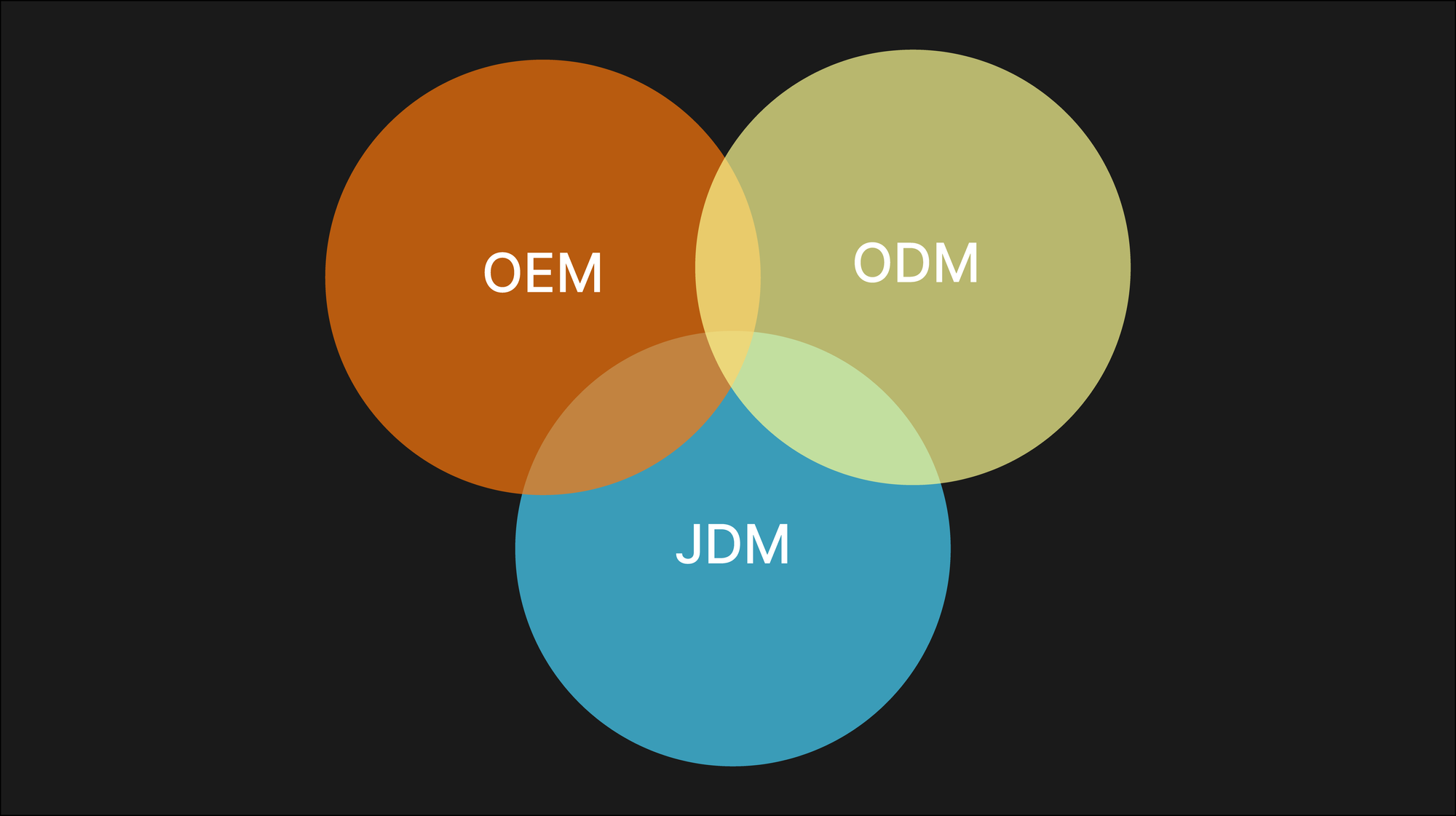The manufacturing options available to technology companies are often obscured by a complex array of acronyms. This complexity, compounded by the overlapping roles in IT supply chains, makes it challenging to discern the distinct functions of product designers, manufacturers, suppliers, integrators, and resellers. Three prevalent models in this landscape are OEM, ODM, and JDM. Understanding these models is crucial in determining their relevance to your enterprise, which varies based on your position in the value chain, market orientation, and business trajectory.

Understanding OEMs, ODMs, and JDMs
Original Equipment Manufacturer (OEM)
Most consumers are familiar with the OEM model, where an outsourcing company submits all specifications, design, and development processes to the OEM. The OEM’s role is to build the product as per these specifications. The final product carries the brand of the outsourcing company, which retains all responsibilities for sales, marketing, and distribution. In this scenario, the OEM is essentially a contract manufacturer, producing either semi-finished or finished products.
The OEM model is often preferred by enterprises looking to avoid the complexities of manufacturing, including resource management and labor. It offers market access and enables companies, particularly startups or those with limited resources, to focus on core operations and strategies. By partnering with an OEM, these companies can gain access to markets that might otherwise be challenging due to foreign entry barriers.
Original Design Manufacturer (ODM)
The ODM model is an alternative where the outsourcing enterprise provides product specifications, and the ODM is responsible for both design and manufacturing. This approach can significantly reduce development costs and simplify the supply chain. The final product, typically branded by the outsourcing company, may be developed at lower costs due to shared resources and advanced manufacturing technologies. However, flexibility, order quantities, and local support can be limiting factors when outsourcing to ODMs.
The final product, while manufactured by the ODM, is typically adorned with the brand or trade dress of the outsourcing enterprise, a practice commonly referred to as "white boxing" or "white labeling."
The benefits of this model to the outsourcing enterprise are manifold:
- Reduced Costs: Lower expenses associated with new product introduction and development are a primary advantage. By leveraging the ODM's resources, the outsourcing company can significantly cut down on labor costs, overhead, and the inputs required for resource management.
- Simplified Supply Chain: The ODM model streamlines the supply chain process, removing layers of complexity and facilitating smoother operations.
- Advanced Manufacturing: Access to more sophisticated manufacturing processes and technologies is another significant benefit, allowing for higher quality and efficiency in production.
However, it's important to note that the ODM retains all relevant licensing and intellectual property (IP) rights. Often, the same base product is licensed to multiple enterprises, with the final assembly being identical in all aspects except for the branding. This aspect of ODM highlights a potential limitation: product flexibility, minimum order quantities, and local support coverage can be challenging when outsourcing to ODMs. These factors need to be carefully considered by enterprises looking to capitalize on the benefits of the ODM model.
Joint Development Manufacturer (JDM)
JDM is a hybrid model, blending elements of OEM and ODM. Here, certain parts are designed and manufactured by the outsourcing enterprise, while other components and final assembly are handled by the JDM. This model fosters a collaborative relationship, beneficial for both parties. It's particularly useful for hardware manufacturers lacking specific parts or expertise, allowing them to retain substantial control over the process.
A key challenge in the JDM model is the management of IP, which requires clear agreements and effective communication to ensure adherence to original specifications and successful product outcomes. Effectively managing these complexities demands a strong and transparent relationship, where every stage clearly defines the introduction, assignment, or more frequently, the sharing of IP. Maintaining open and consistent communication throughout the design and manufacturing stages is crucial. This ensures adherence to the initial agreement and specifications, leading to a final product that meets the planned performance criteria.

Choosing the Right Model for your Business: OEM, ODM, or JDM
Selecting the appropriate model depends on your enterprise's needs and market strategy.
Collaborating with an OEM offers your enterprise substantial control over the manufacturing process. While this collaboration might require sharing sensitive designs or information, your organization retains ownership of all pertinent licenses and intellectual property (IP). This may vary with the use of standard, off-the-shelf products. Although partnering with an OEM might lead to higher costs compared to other models, it simplifies your supply chain and reduces complexity across the board.
Engaging an ODM can be a strategic move to reduce product development expenses. With an ODM, the responsibilities for design, development, and R&D are transferred, allowing your enterprise to focus on critical operations. While this means relinquishing control over certain licenses, IP, and detailed cost breakdowns, it's an effective strategy if these elements are not central to your business model. A comprehensive understanding of the product, including major components and field-replaceable units for easy repairs, is essential. However, this model necessitates vigilant management of business relationships and consistent communication, introducing a layer of complexity in strategic operations.
The JDM approach strikes a balance, sharing responsibilities between you and your JDM partner. This collaboration can mitigate some costs, but it also requires dedicated resources to maintain a smooth and fair partnership. If there's an existing foundation of trust with a JDM partner, navigating this model can be more straightforward and less challenging. It aligns well with contemporary business trends favoring multinational cooperation and U.S.-based manufacturing.
AMAX as Your OEM, ODM, and JDM Solutions Partner
In choosing between OEM, ODM, or JDM, it's important to recognize that outsourcing partners vary in their capabilities and the experiences they offer. Conduct a thorough market analysis, aligning it with your business objectives and capabilities, to make the most informed decision for your enterprise's needs.
At AMAX, we provide complete services merging elements of OEM, ODM, and JDM. Our expertise in these areas ensures a complete approach that align with your specific computing needs and business objectives. Whether you're seeking complete control over manufacturing processes, cost-effective product development, or a balanced partnership, AMAX stands ready to deliver. We invite you to explore how our capabilities in OEM, ODM, and JDM can drive your enterprise's success.


